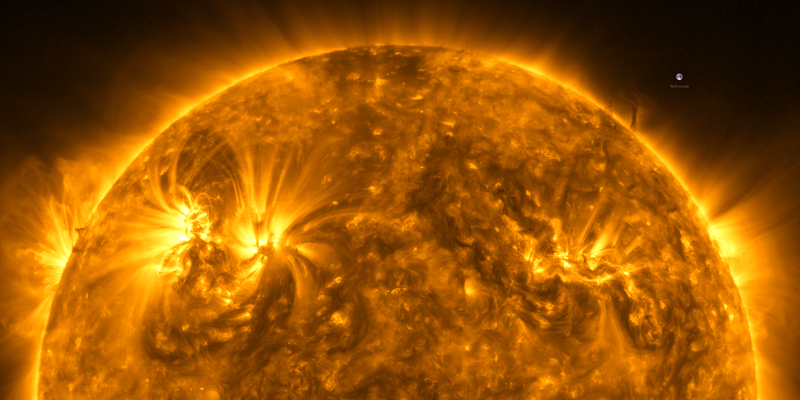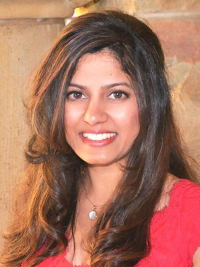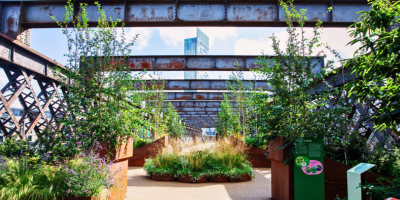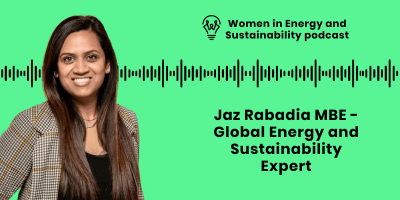Dr Nina Vaidya studied for her engineering degree at the University of Cambridge and after this she worked as a strategy consultant for international engineering companies in Europe and Asia. Nina then undertook her PhD in Electrical Engineering at Stanford University, going on to work at the California Institute of Technology, Caltech, as a postdoctoral fellow before joining the University of Southampton as faculty. Today, Nina works as an assistant professor in the Faculty of Engineering and Physical Sciences at the University, where her work is now being applied to the field of space-solar and nanotechnology.
“The societal challenge of moving towards Net Zero with totally green/renewable technologies and being energy abundant/energy independent is an urgent need. There are various routes being explored and implemented that can take us there, and space-based solar power is one of them that can help catalyse this change.”
Ode to Mr Tweedle and mentors along the way
Growing up I used to be interested in arts, painting and crafts, and was training in Indian classical dancing for several years. Then in middle school, I found myself engrossed in mathematics, almost non-stop, even after school. I was fortunate to have had great maths teachers in my hometown who introduced me to the STEM fields.
In between all of this, I immigrated to the UK from a small place in India because of my dad’s job.
Within a few months of moving, my new headteacher suggested I should apply to Oxbridge. At that point, I could hardly understand the Yorkshire accent and was finding my bearings in a new school on a new continent. He was saying: “You should apply to Oxbridge.” And I said: “What is that?” He explained about the Oxford/Cambridge track and that the application processes have an earlier deadline than the rest of the UK UCAS system.
So, a big thank you to my headteacher, Mr Tweedle, for explaining to the process and encouraging me to apply. So many amazing teachers and mentors have helped me navigate my career at different stages. It highlights the responsibility and impact of teachers and mentors in one’s life and I have been aiming to serve a similar role for my present students.
I was offered a place at Selwyn College at the University of Cambridge for my undergraduate study. During my time there I ended up inventing a new type of pollutant sensor for my Master’s project, which was my first real insight into engineering research. Since then, I haven’t stopped, apart from the time I spent working on management and strategy consulting for large engineering clients for a few years because I wanted to see the real-world applications after my undergraduate studies.
I then went back to university to complete my PhD at Stanford University, after which I undertook a space project at Caltech as a postdoctoral fellow. I then took up my faculty job at the University of Southampton after being stranded for over a year due to the pandemic travel and visa suspensions.
The role of an assistant professor
A typical day/week of a new faculty member is divided into three aspects. Firstly, it’s teaching — so classroom teaching, laboratory work with PhD students, postdocs, and scientists, and guided projects. Secondly, it’s research. There are new research projects that I’m undertaking with my research group here that are both theory and laboratory experimental work.
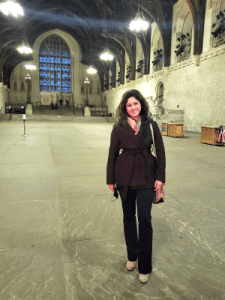
Finally, the third aspect of a faculty member’s day-to-day role would be service within the department and university and external outreach, so writing things like this article, trying to reach people and communicate the impact of the science and technology projects we are undertaking. There are various aspects of outreach such as reinforcing the importance of education, gearing up and collective action to tackle urgent societal challenges, and encouraging diversity in all its forms (including inviting women to join me in addressing global threats via STEM fields). I love it, not just because it’s meaningful, but also because it’s fun!
Redesigning for sustainability
The overarching principle of my research is that I’m investigating light-matter interactions at multiple scales, which involves developing new types of optics, photonics, and materials.
In terms of implementation, it’s about various optical and optoelectronic devices, detectors, solar cells, and especially creating these devices and systems for the space environment. So, it’s about how we take our terrestrial engineering knowledge and redesign that for the urgent sustainability challenges and the upcoming space era.
Ways space technologies can help us in our day-to-day lives
Humanity always seeks to understand our world better. We want to go out there and explore space phenomena and understand how we can use some of that knowledge to make our lives better while keeping us safe.
In the short to medium term, the practical aspect is that large space projects will bring in a lot of innovations via interdisciplinary teams. The hard work of all the scientists and engineers often leads to several applications that can be used on Earth too. For example, multijunction solar cells were first made for space applications which are now also used to generate energy in terrestrial applications.
The initial idea for space-based solar power, which I will go on to talk more about later, initially came from science fiction, but it’s now evolved into science fact.
Diversity translates into excellence
There’s a body of research by various people around the world about the importance of diversity of thought, and there is evidence that diverse teams make projects work better, because diversity translates to excellence.
As part of my fellowship at Stanford (DARE: Diversifying Academia, Recruiting Excellence) we explored this topic more deeply. To tackle the numerous large and unpredictable societal challenges that the world is facing, globally, we need diversity in all its forms and collective action breaking away from any conscious and unconscious biases.
Unique benefits of space-based solar power
The societal challenge of moving towards Net Zero and totally green technologies, and being energy abundant/energy independent is an urgent need. Various routes are being explored and implemented to take us there, and space-based solar power is one of them.
We have over ten times more power in space than reaches us on Earth’s surface because of the day-night cycle, loss due to the atmosphere, and weather.
It is possible to collect sunlight in space, convert it into electricity, for example, by using photovoltaic solar cells, then convert that electricity into microwaves by antenna arrays, and then beam it to receivers wherever they are needed in space or on Earth.
Space-based solar power is dispatchable energy that can be used wherever needed. So, we could even power off-grid places taking us one step closer to energy equality. We could potentially get power to vulnerable people in areas which have had a natural calamity or in a war zone. So suddenly, there are all these benefits of getting dispatchable utility-scale power from space.
In terms of the future of these space-based solar power (SBSP) systems, we want to go towards ultra-lightweight systems. It has to be ultra-lightweight for launch as otherwise, the launch costs and number of launches required aren’t feasible. Once you overcome these challenges you can have utility-scale space constellations.
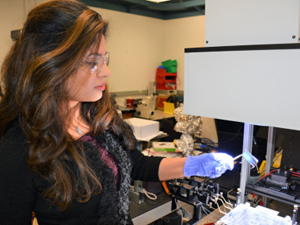
My job in the SBSP project at Caltech was to create space concentrators that are extremely efficient so they don’t lose any light, but also ultra-lightweight, with materials that are space-compatible and hardy. I invented a completely new type of space reflector. In addition, I’m working on new materials such as perovskites and new types of nanometre-thick solar cells, so they act as energy-harvesting membranes which can be folded for launch and deployed once in space.
We collect the sunlight in space. We ideally want to concentrate it to collect as much as possible in a small area, and then we want to convert the solar light into electricity using photovoltaic solar cells.
Then we have phased arrays and antennas that take the electricity and turn it into microwaves. We send these microwaves to receivers that convert it back to electricity and you can either plug that into the electricity grid on Earth or whatever is needed from there.
Our team at Caltech launched a demonstration in 2023 with our partners, SpaceX and Momentus, which has reached end of mission and has been successful in space, so we already know it’s possible. The team is in the process of going through the data and getting ready to disseminate the results and mission lessons to the wider community to help chart the future directions of space solar.
We also want to be mindful of a circular economy when we manufacture these space constellations and launch them, even if we are creating a green energy source.
Coming up next
I’m looking forward to taking part in an interview for a BBC documentary next month, which will feature some of my work.
I am particularly excited to talk more about and disseminate several results in the space-based solar power project I undertook with my colleagues at Caltech. I am also looking forward to publishing some of the studies about the new types of solar cells and photonic devices I am creating, which hopefully take us forward in these overarching sustainable energy and space applications. These advance our fundamental understanding and utilization of light-matter interaction, novel materials, and physics phenomena.
Header image credit: ESA

